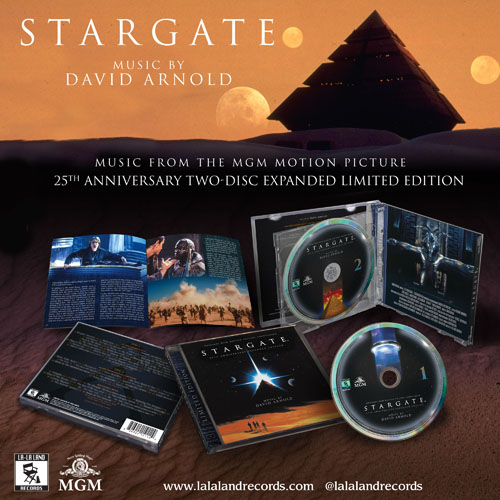I'll tell you a recent experience I had with a new CD set I got and the different digital filters on the Topping D50.
La La Land Records that is a label exclusively dedicated to release movie soundtracks released around a month ago the full Stargate soundtrack as a 2 CD set. I've always liked how this soundtrack sounds despite being a full digital recording from 1994. There were two previously releases, the original 1994 album and an expanded released by Varese Sarabande from 2006. Both sound great with a very analogue-like sound, that is, to harsh highs or thin bass typical from 44.1/16 equipment from the era, Sony Pro recording equipment most of all (DASH Sony PCM 3324/PCM 3348 multitrack recorders and PCM 1630 stereo recorders for the final mix down).
For movie soundtracks two versions are often done, one for the soundtrack and a second one for the movie audio track. These can be different recordings or just different mixes from the same recording session tapes.
This new 2 CD set of the Stargate soundtrack sounds like nothing like the two previous releases, its sounds 100% harsh and agressive 44.1/16 PCM digital but it features the full soundtrack (plus some alternate versions and outakes) as heard on the final, sequencing is exactely as it is on the movie.
I have my D50 always set to filter 5 as this is the one that sounds the best with the rest of my equipment that sounds rather soft and warm.
Looking at the different roll off pictures of the filters on Topping website and also at the leaked specs of the Sabre ES9038Q2M chip I thought that filter 2 with its slow filter (aka it starts rolling frequencies off before 20 Khz) may get this 2 CD set more listenable and less agressive. And I was damn right, it doesn't do any magic but it get this soundtrack to sound less agressive and harsh. I tried all of the 7 filters with this soundtrack and it also sounded fine with filter 4 but I found filter 2 the more pleasing of the two.
So the different filters on the Topping D50 DO WORK, they not also let you make your D50 fit better with the rest of your equipment, they can also be used to tame bright recordings.
Here's the link for this Stargate soundtrack release for those of you that may be interested on it:
https://lalalandrecords.com/stargate-25th-anniversary-expanded-limited-edition-2-cd-set/


